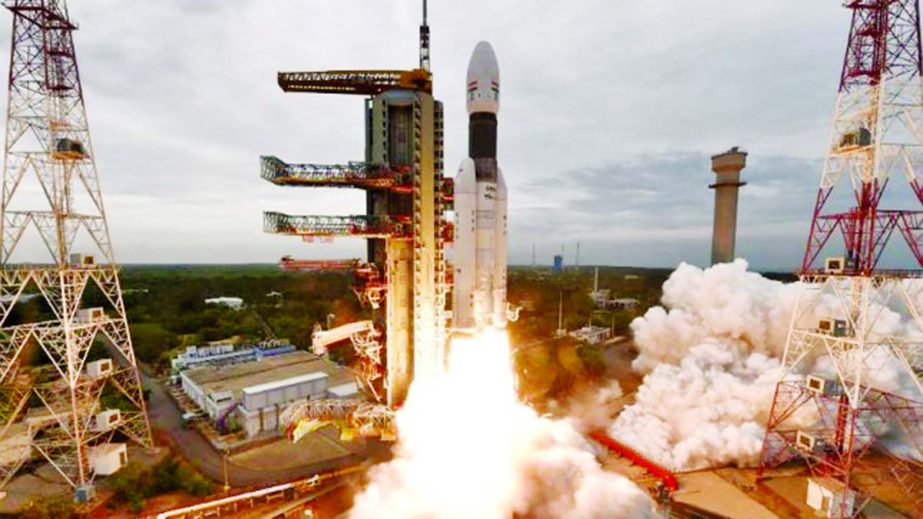
ANN :
India’s second unmanned moon mission, the Chandrayaan-2 spacecraft, was successfully put into the lunar orbit, marking a major milestone for the country’s space programme today.
“Lunar Orbit Insertion (LOI) maneuver was completed successfully at 0902 hours as planned, using the onboard propulsion system”, the Indian Space Research Organization (ISRO) said in a statement.
“The duration of maneuver was 1,738 seconds. With this, Chandrayaan-2 was successfully inserted into a Lunar orbit,” the statement also said. This was one of the most complex operations in the moon mission as a higher-than-expected approach velocity would have bounced off the spacecraft into deep space while a slow approach would have led to the moon’s gravity to pull Chandrayaan-2 and crash it on the lunar surface, according to our new Delhi correspondent.
Following this, a series of orbit maneuvers will be performed on Chandrayaan-2 spacecraft to enable it to enter its final orbit passing over the moon’s poles at a distance of about 100 km from the lunar surface, it said.
Subsequently, the lander will separate from the Orbiter and enter into a 100 km X 30 km orbit around the moon. Then, it will perform a series of complex braking maneuvers to slow down the speed for soft landing in the South polar region of the moon on September 7, ISRO stated.
Chandrayaan-2, launched on July 22 by GSLV MkIII-M1 vehicle, had entered the Lunar Transfer Trajectory on August 14. According to ISRO, Chandrayaan-2 will shed light on a completely unexplored region of the moon-its south Pole.
India’s second unmanned moon mission, the Chandrayaan-2 spacecraft, was successfully put into the lunar orbit, marking a major milestone for the country’s space programme today.
“Lunar Orbit Insertion (LOI) maneuver was completed successfully at 0902 hours as planned, using the onboard propulsion system”, the Indian Space Research Organization (ISRO) said in a statement.
“The duration of maneuver was 1,738 seconds. With this, Chandrayaan-2 was successfully inserted into a Lunar orbit,” the statement also said. This was one of the most complex operations in the moon mission as a higher-than-expected approach velocity would have bounced off the spacecraft into deep space while a slow approach would have led to the moon’s gravity to pull Chandrayaan-2 and crash it on the lunar surface, according to our new Delhi correspondent.
Following this, a series of orbit maneuvers will be performed on Chandrayaan-2 spacecraft to enable it to enter its final orbit passing over the moon’s poles at a distance of about 100 km from the lunar surface, it said.
Subsequently, the lander will separate from the Orbiter and enter into a 100 km X 30 km orbit around the moon. Then, it will perform a series of complex braking maneuvers to slow down the speed for soft landing in the South polar region of the moon on September 7, ISRO stated.
Chandrayaan-2, launched on July 22 by GSLV MkIII-M1 vehicle, had entered the Lunar Transfer Trajectory on August 14. According to ISRO, Chandrayaan-2 will shed light on a completely unexplored region of the moon-its south Pole.

